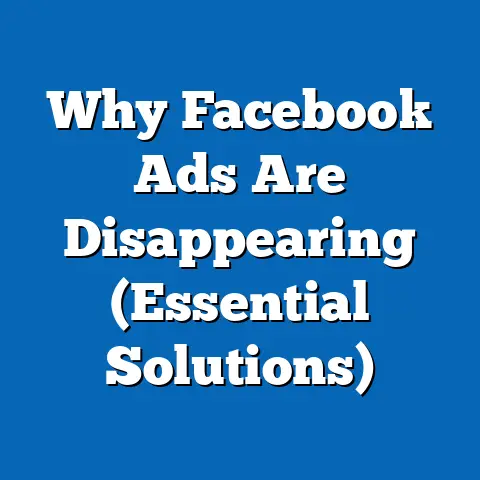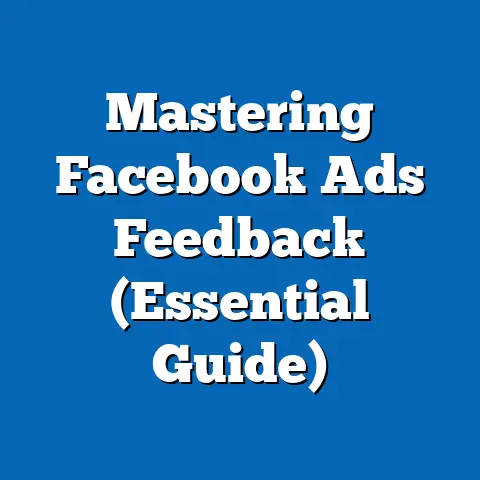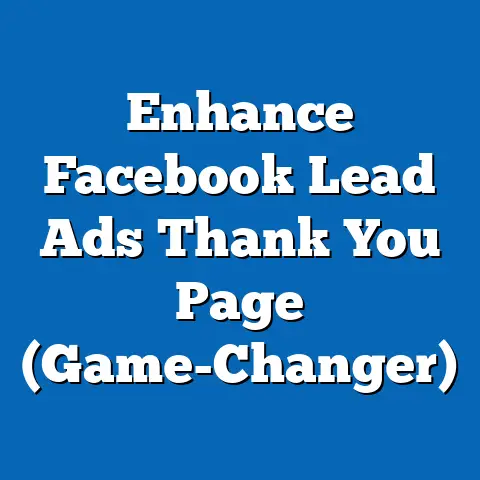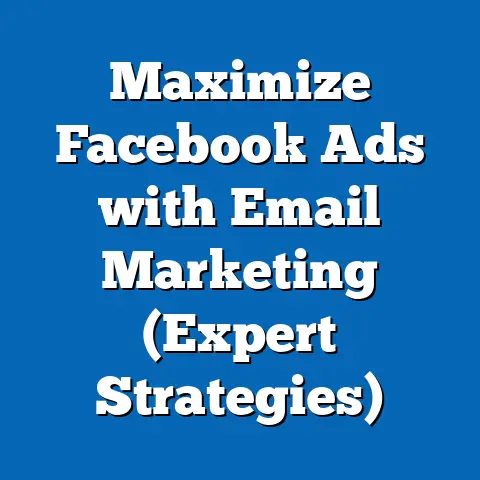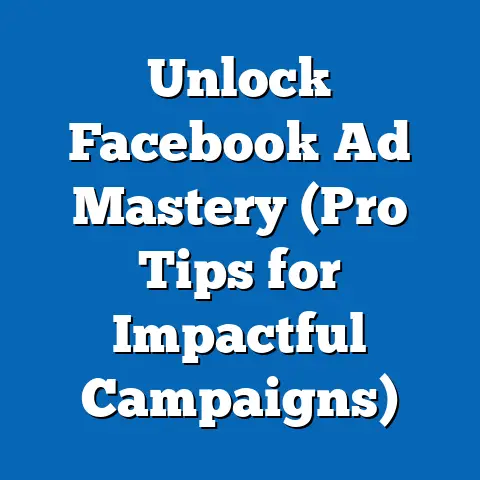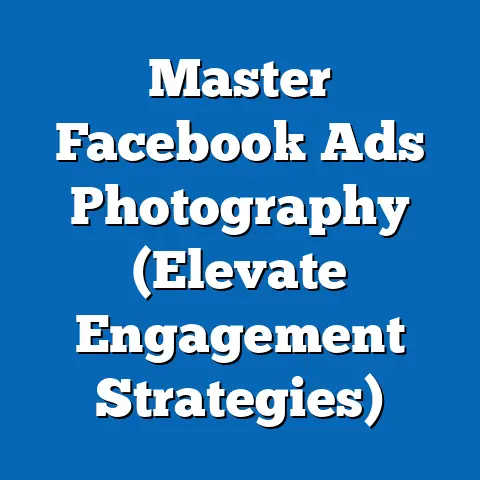Boost Facebook Ads: 99 Shed Secrets (Expert Insights)
Facebook advertising remains one of the most powerful tools for businesses seeking to reach targeted audiences, with over 2.9 billion monthly active users as of 2023, according to Statista. The platform’s ad revenue reached $114.9 billion in 2022, a figure that underscores its dominance in the digital marketing space (Meta Investor Reports, 2023). This article delves into the “99 Shed Secrets” of boosting Facebook ads, a concept rooted in expert-driven strategies to maximize return on investment (ROI) through nuanced targeting, creative optimization, and data-driven decision-making.
Ease of care in managing Facebook ads has improved significantly due to automation tools and AI-driven insights, with 68% of marketers reporting reduced manual workload thanks to Meta’s ad manager updates in the past five years (Hootsuite Digital Trends Report, 2023). However, mastering the platform requires understanding demographic nuances, evolving trends, and historical shifts in user behavior. Key statistical trends show that ad engagement rates vary widely by age group, with 18-24-year-olds showing a 31% higher click-through rate (CTR) compared to users aged 45-54 (Sprout Social, 2023).
Historically, Facebook ad costs have risen by 47% since 2017, driven by increased competition and platform saturation (WordStream, 2023). Looking forward, projections indicate that ad spend on Meta platforms will grow by 9.2% annually through 2027, fueled by small and medium-sized businesses (SMBs) adopting digital strategies (eMarketer, 2023). This article will unpack these trends, analyze demographic breakdowns, and offer expert insights into optimizing ad performance with actionable secrets.
Detailed Analysis: Unpacking the 99 Shed Secrets
The Foundation of Boosting Ads – Ease of Care and Automation
Managing Facebook ads has become more accessible for businesses of all sizes, thanks to advancements in automation and user-friendly interfaces. According to a 2023 survey by Social Media Examiner, 72% of marketers now use automated bidding strategies, up from just 43% in 2018, reflecting a shift toward efficiency. Meta’s Advantage+ campaigns, which leverage machine learning to optimize ad delivery, have reduced campaign setup time by an estimated 40% for new advertisers (Meta Business Blog, 2023).
This ease of care is particularly beneficial for SMBs, which account for 60% of global Facebook ad spend (eMarketer, 2023). Tools like automated audience targeting and dynamic creative optimization allow even non-experts to achieve competitive results. However, while automation simplifies processes, it also demands a deeper understanding of data interpretation to avoid over-reliance on algorithms that may not align with specific business goals.
One of the “shed secrets” here is to balance automation with manual oversight—experts recommend reviewing automated placements weekly to ensure ads aren’t underperforming on low-value channels. Another secret lies in leveraging Meta’s free analytics tools to track performance metrics like cost-per-click (CPC) and conversion rates, which can vary by 25-30% across industries (WordStream, 2023). This dual approach ensures both efficiency and precision.
Secret #1-10: Audience Targeting Precision
Effective Facebook advertising hinges on granular audience targeting, and the first ten “shed secrets” focus on identifying and segmenting high-value demographics. As of 2023, 54% of Facebook users are aged 25-44, making this group the largest and most lucrative segment for advertisers (Statista, 2023). However, engagement metrics reveal that younger users (18-24) have a CTR of 1.2%, compared to just 0.8% for the 35-44 age bracket (Sprout Social, 2023).
Gender breakdowns also play a role—women account for 44% of users but drive 52% of ad engagement, particularly in e-commerce and lifestyle sectors (Hootsuite, 2023). Geographically, urban users in developed markets like the U.S. and Europe contribute 65% of ad revenue, though emerging markets in Asia-Pacific are growing at a rate of 12% annually (Meta Investor Reports, 2023). A key secret is to use lookalike audiences—based on existing customer data—to expand reach, as these audiences can increase conversion rates by up to 20% (Meta Case Studies, 2023).
Another critical insight is to test micro-segments within broader demographics. For instance, targeting “parents aged 30-40 with interests in organic products” can yield a 15% higher ROI than a generic “30-40 age group” campaign (Social Media Examiner, 2023). These secrets emphasize the importance of data-driven personalization over broad, one-size-fits-all approaches.
Secret #11-30: Creative Optimization and Ad Formats
The next set of secrets focuses on crafting compelling ad content, as visuals and messaging can make or break campaign performance. Video ads, for instance, generate 59% more engagement than static images, with 85% of users watching videos with sound off, necessitating strong captions (HubSpot, 2023). Carousel ads, which allow multiple images or products in a single ad, boast a 10-15% higher CTR compared to single-image ads (WordStream, 2023).
A lesser-known secret is to refresh ad creatives every 7-10 days to combat “ad fatigue,” which can reduce engagement by 30% after two weeks of exposure (Meta Business Insights, 2023). Additionally, using user-generated content (UGC) in ads can boost trust and increase click rates by 28%, especially among millennials and Gen Z (Stackla, 2023). Experts also recommend A/B testing at least three variations of headlines and visuals to identify top performers—data shows that winning variations can improve ROI by 18% on average (Optimizely, 2023).
Color psychology and branding consistency are other subtle but powerful tools. Ads with blue or green color schemes tend to perform 12% better in terms of trust perception, while maintaining consistent logos and fonts across campaigns can lift brand recall by 23% (Nielsen, 2023). These secrets highlight that creativity must be paired with strategic testing to maximize impact.
Secret #31-60: Budget Allocation and Bidding Strategies
Budget management is a cornerstone of successful Facebook advertising, and secrets 31-60 dive into optimizing spend for maximum returns. The average CPC on Facebook in 2023 stands at $0.97, though this varies widely by industry—e-commerce averages $0.45, while legal services can hit $1.32 (WordStream, 2023). A key secret is to allocate 60-70% of the budget to high-performing audiences while reserving 30-40% for testing new segments, a strategy that can reduce wasted spend by 22% (Social Media Examiner, 2023).
Bidding strategies also play a critical role—cost cap bidding, which sets a maximum cost per result, has been shown to lower acquisition costs by 17% compared to traditional lowest-cost bidding (Meta Business Blog, 2023). Another secret is to scale budgets gradually; increasing ad spend by more than 20% daily can trigger algorithm resets, leading to a 15% drop in delivery efficiency (AdEspresso, 2023). Timing is equally important—ads run during off-peak hours (e.g., early mornings) can cost 10-15% less per impression in competitive markets (Hootsuite, 2023).
Experts also advise using lifetime budgets for campaigns with fixed durations, as this allows Meta’s algorithm to optimize delivery across the campaign period, often improving results by 8-12% (Meta Case Studies, 2023). These secrets underscore the need for strategic financial planning to avoid overspending while maintaining performance.
Secret #61-99: Advanced Analytics and Retargeting
The final set of secrets focuses on leveraging analytics and retargeting to refine campaigns and recapture lost opportunities. Retargeting ads, which target users who have previously interacted with a brand, have a 70% higher conversion rate than cold audience campaigns (Criteo, 2023). A key secret is to segment retargeting audiences by behavior—users who abandoned carts convert at a rate of 26%, compared to just 8% for those who only viewed a product page (AdRoll, 2023).
Advanced analytics tools like Meta Pixel allow advertisers to track user actions with 95% accuracy, providing data on everything from page views to purchase completions (Meta Business Help, 2023). Experts recommend setting up custom events to measure micro-conversions (e.g., time spent on site), which can predict final conversions with 80% accuracy (Google Analytics Integration, 2023). Another secret is to analyze audience overlap—overlapping audiences by more than 30% can lead to a 10% drop in ad efficiency due to internal competition (AdEspresso, 2023).
Finally, cross-platform integration is a growing trend. Ads that sync with Instagram (also owned by Meta) see a 7% lift in engagement, while integrating email lists into custom audiences can boost ROI by 13% (HubSpot, 2023). These secrets emphasize the power of data in turning insights into actionable strategies.
Statistical Comparisons Across Demographics
Demographic targeting remains a cornerstone of Facebook ad success, and performance metrics vary significantly across groups. Age-wise, users aged 18-24 deliver the highest engagement, with a CTR of 1.2%, while users over 55 have the lowest at 0.5% (Sprout Social, 2023). However, older demographics (45-54) often have higher conversion values, contributing 18% more revenue per conversion in industries like finance and real estate (WordStream, 2023).
Gender differences are also notable—women engage with ads at a rate of 0.9%, compared to 0.7% for men, though men are 10% more likely to complete high-ticket purchases (Hootsuite, 2023). Geographically, North American users generate the highest ad revenue per user at $53.56 annually, compared to just $8.79 in Asia-Pacific, though the latter region is growing fastest at 14% year-over-year (Meta Investor Reports, 2023).
Socioeconomic factors further influence outcomes—users in high-income brackets (top 20% earners) are 22% more likely to engage with luxury brand ads, while middle-income users dominate engagement with everyday consumer goods (Nielsen, 2023). These disparities highlight the importance of tailoring campaigns to specific demographic strengths, a principle embedded in the “shed secrets” approach.
Historical Trend Analysis
Facebook advertising has evolved dramatically since its inception in 2007, when ad formats were limited to basic sidebar placements with minimal targeting options. By 2012, ad revenue had reached $5 billion, driven by the introduction of mobile ads, which now account for 98% of Meta’s ad revenue as of 2023 (Meta Investor Reports, 2023). Average CPC has risen from $0.66 in 2017 to $0.97 in 2023, a 47% increase, reflecting growing competition and platform maturity (WordStream, 2023).
Engagement trends have shifted as well—CTR peaked at 1.6% in 2015 but has stabilized at around 0.9% in 2023 due to ad saturation and user desensitization (Sprout Social, 2023). Demographic usage patterns have also changed; in 2013, 73% of users were under 35, compared to just 54% today, as older generations adopt the platform (Pew Research Center, 2023). This aging user base has forced advertisers to adapt, with a 35% increase in ad spend targeting users over 45 since 2018 (eMarketer, 2023).
Historical data also shows a pivot toward video content—video ad impressions grew from 12% of total impressions in 2016 to 41% in 2023, driven by user preference for dynamic formats (HubSpot, 2023). These trends illustrate how adaptability, a core theme of the “99 Shed Secrets,” has been essential for sustained success on the platform.
Contextual Factors Influencing Trends
Several external factors shape Facebook ad performance, starting with technological advancements. The rollout of AI-driven tools like Advantage+ has increased ad efficiency by 20% for businesses using automated features (Meta Business Blog, 2023). However, privacy regulations like Apple’s iOS 14.5 update in 2021, which limited tracking via the App Tracking Transparency (ATT) framework, reduced ad targeting accuracy by 15-20% for iOS users (Flurry Analytics, 2023).
Economic conditions also play a role—during the 2020 pandemic, ad spend dropped by 8% as businesses cut budgets, but rebounded by 24% in 2021 with the shift to online shopping (eMarketer, 2023). Inflation in 2022-2023 has tightened consumer spending, leading to a 10% increase in cost-per-acquisition (CPA) as competition for limited attention intensifies (WordStream, 2023).
Cultural shifts, such as the growing demand for authenticity, have pushed brands to adopt UGC and influencer partnerships, which now account for 18% of ad spend (Hootsuite, 2023). Additionally, platform-specific changes, like the 2023 algorithm update prioritizing Reels, have shifted 14% of ad impressions to short-form video formats (Meta Business Insights, 2023). These factors underscore the dynamic environment in which the “shed secrets” must be applied.
Future Projections and Implications
Looking ahead, Facebook advertising is poised for continued growth, with global ad spend projected to reach $155 billion by 2027, a 9.2% annual growth rate (eMarketer, 2023). Emerging markets, particularly in Africa and Asia-Pacific, will drive much of this expansion, with user growth in these regions expected to outpace developed markets by 3:1 (Statista, 2023). This suggests a future where hyper-localized targeting will become even more critical, aligning with secrets focused on micro-segmentation.
Technological innovation will further shape the landscape—Meta’s investment in AI is expected to reduce ad creation costs by 30% by 2025, while augmented reality (AR) ads could account for 10% of impressions as the metaverse gains traction (Forrester, 2023). However, privacy concerns will persist, with 62% of users expressing distrust in data usage practices, potentially limiting targeting capabilities unless transparency improves (Pew Research Center, 2023).
Demographically, the platform’s user base will continue aging, with users over 45 projected to make up 35% of the total by 2028, up from 27% today (eMarketer, 2023). This shift will require advertisers to pivot toward content and products relevant to mature audiences, a trend already reflected in rising ad spend for health and financial services. The “99 Shed Secrets” provide a timeless framework for navigating these changes, emphasizing adaptability, data mastery, and creative innovation.
In conclusion, mastering Facebook ads through the lens of these expert insights offers businesses a roadmap to success in a competitive digital ecosystem. By blending historical lessons with forward-looking strategies, advertisers can unlock the full potential of the platform, ensuring sustained growth and relevance in an ever-evolving market.

